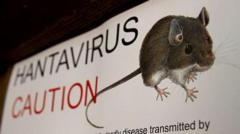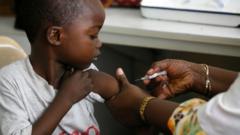Hantavirus, a rare disease transmitted by rodents, has been confirmed as the cause of respiratory illness leading to the death of Betsy Arakawa, wife of actor Gene Hackman. As health experts caution about its symptoms and potential severity, we examine what hantavirus is, its transmission, and recommended preventive measures.
Understanding Hantavirus: The Disease Linked to Gene Hackman's Wife's Death

Understanding Hantavirus: The Disease Linked to Gene Hackman's Wife's Death
The rare disease connected to Betsy Arakawa's tragic passing highlights the dangers of hantavirus, a rodent-borne illness.
Hantavirus has emerged as a serious health concern following the death of Betsy Arakawa, the wife of Oscar-winning actor Gene Hackman. Officials have confirmed that Arakawa succumbed to a respiratory illness tied to this rare disease, which is primarily spread by infected rodents. Health professionals advise that hantavirus can lead to flu-like symptoms after exposure to the droppings of infected animals and, in severe instances, can progress to Hantavirus Pulmonary Syndrome (HPS), a life-threatening lung condition.
Medical authorities suspect that Ms. Arakawa contracted HPS, which ultimately resulted in her passing. It is reported that she died shortly before her husband, who was contending with advanced Alzheimer's disease. The couple was discovered deceased in their New Mexico residence last month.
Hantavirus refers to a category of viruses carried by rodents and is typically transmitted to humans through the inhalation of particles from dried rodent urine, droppings, or saliva. The Centers for Disease Control and Prevention (CDC) notes that infections commonly occur when these materials become airborne. While transmission is rare, it can also happen through bites or scratches from infected rodents, with deer mice being the most prevalent carriers in North America, according to the Mayo Clinic.
Hantavirus can cause two significant illnesses. The primary illness, Hantavirus Pulmonary Syndrome (HPS), is notably the most common strain in the United States. Symptoms often begin with feelings of fatigue, fever, and muscle aches, which may subsequently escalate to headaches, dizziness, chills, and the onset of abdominal issues. Should respiratory difficulties arise, the CDC estimates a mortality rate of about 38%. The other illness, Hemorrhagic Fever with Renal Syndrome, is typically more severe, affecting the kidneys.
From 1993 to 2022, the CDC documented a total of 864 hantavirus cases within the United States, mainly surfacing in rural locales across western states, including California, Washington, Arizona, New Mexico, and Colorado. Surveillance for hantavirus diseases commenced in 1993 due to an outbreak of severe respiratory illness in the Four Corners region, where Arizona, Colorado, New Mexico, and Utah converge. Globally, it is estimated there are roughly 150,000 cases of Hemorrhagic Fever with Renal Syndrome each year, with more than half occurring in China.
Currently, there is no specific treatment for hantavirus infections. The CDC advises supportive care as the best approach to manage symptoms. For those exhibiting severe symptoms, hospitalization in intensive care units may be necessary, with some patients requiring intubation in critical situations. To mitigate risk of exposure to the virus, the CDC recommends taking proactive steps such as sealing potential entry points for rodents in homes and workplaces and donning protective gear when cleaning areas contaminated with rodent droppings.




















